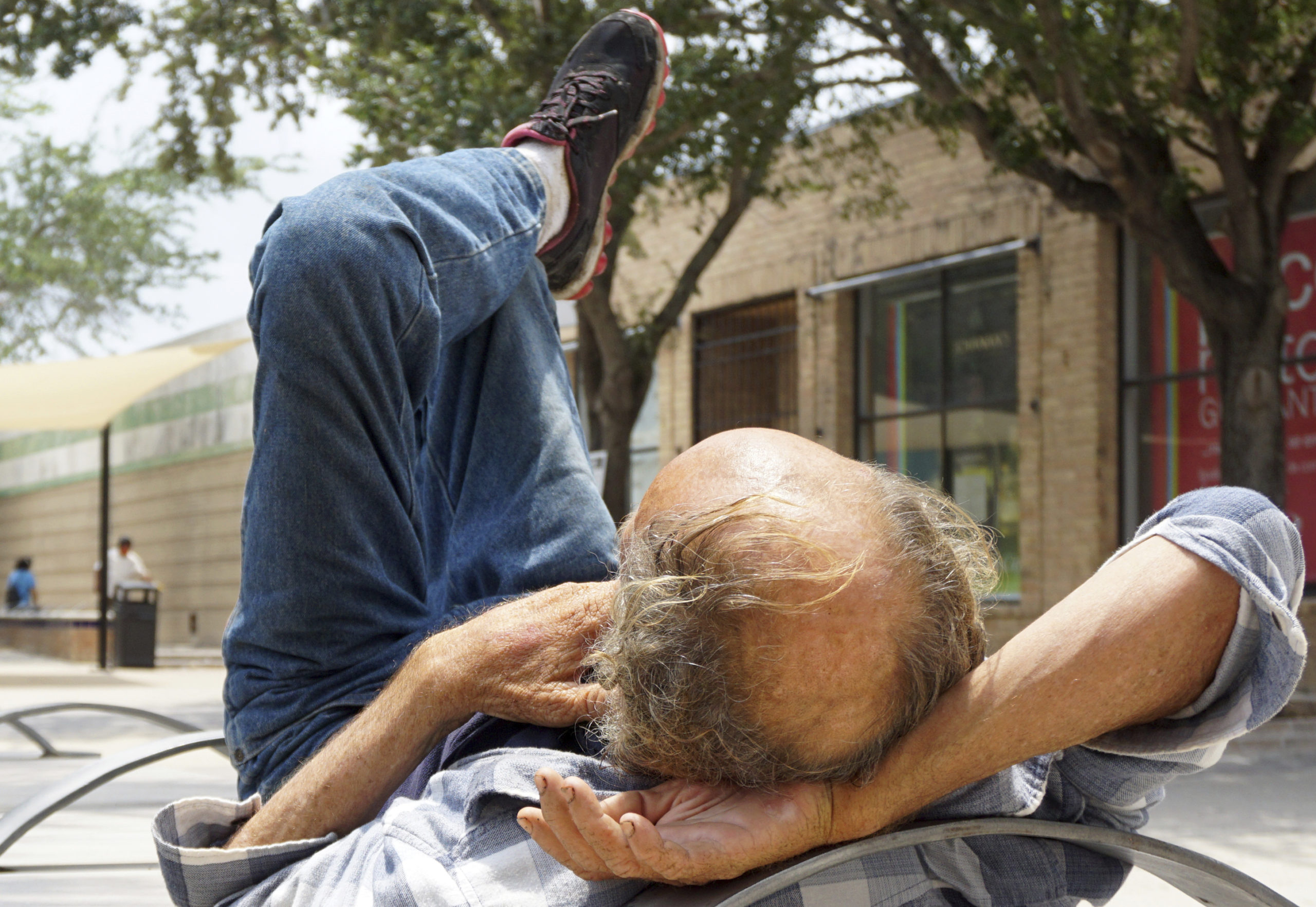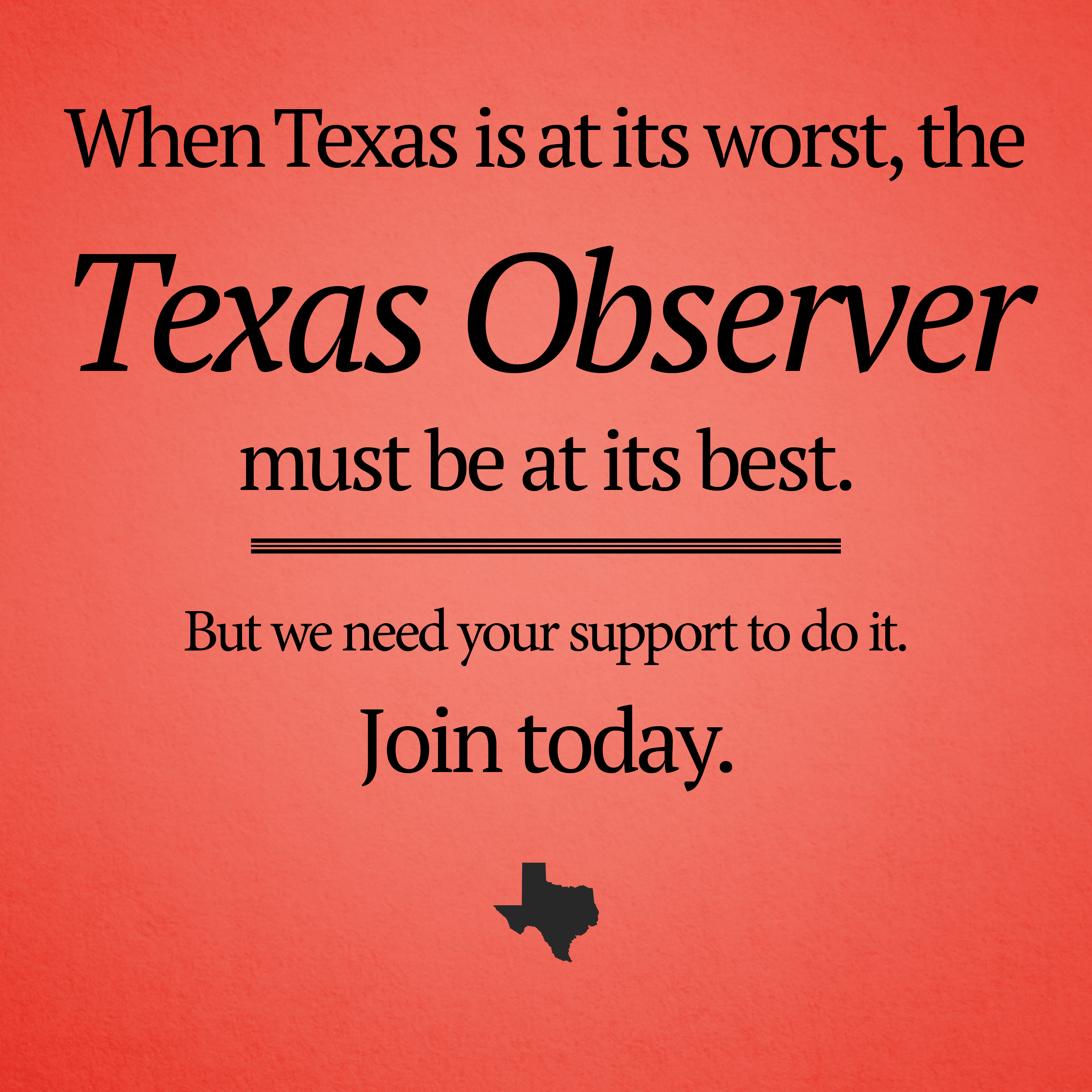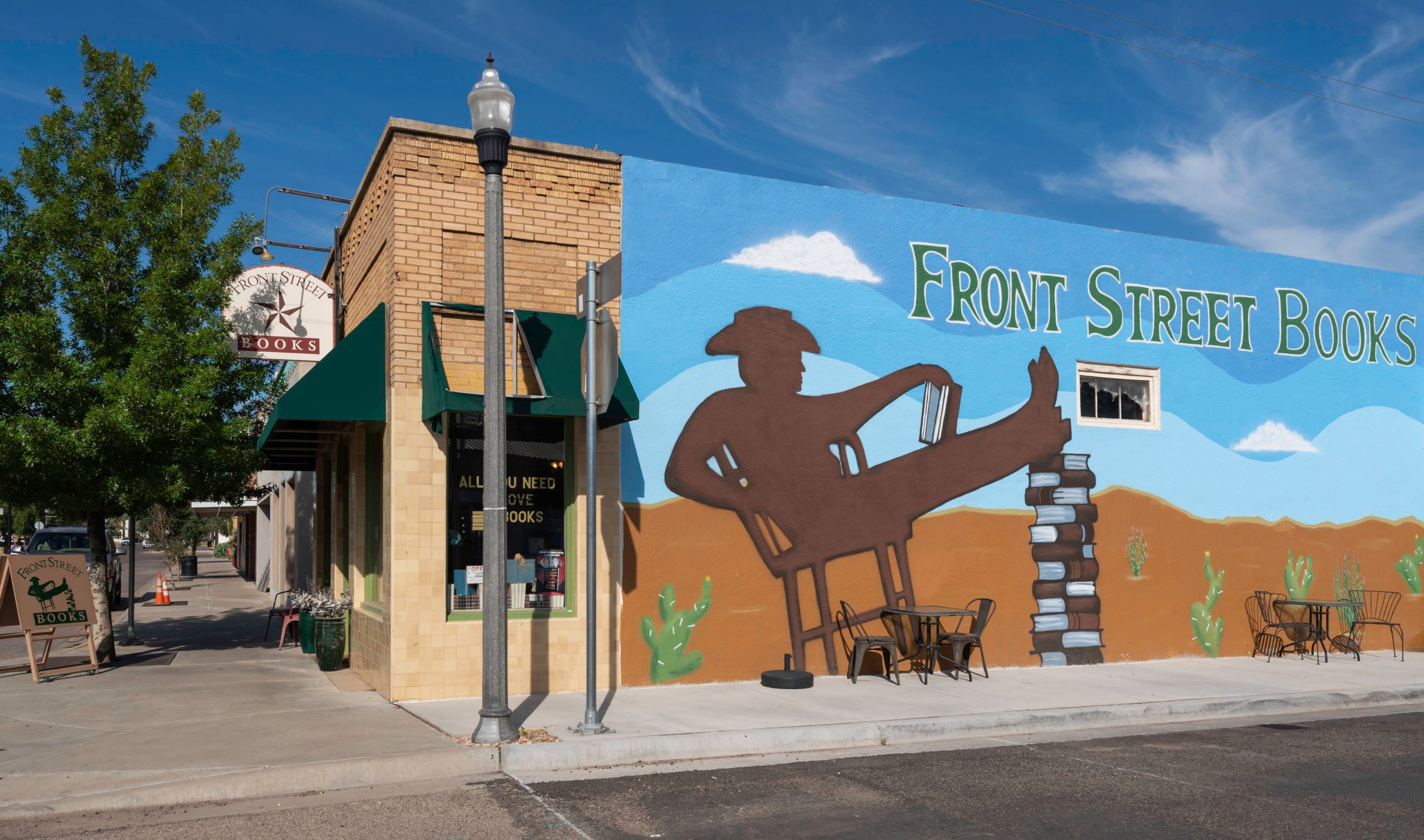
Record Highs: Springtime Heat a Dangerous New Threat to Homeless Texans
Sweltering temperatures imperil unsheltered residents, and community resources aren’t a given.

Last summer, the downtown branch of the Austin Public Library was Steven Potter’s oasis. It’s where he went on some of the hottest days of the year, soaking in the air conditioning and filling up his two-liter water bottles. Potter, who has lived on the street in Austin for about 10 years, said public libraries are some of the most popular places for unsheltered residents to go during the day when the heat gets unbearable.
“The night is when things get a little questionable,” Potter said.
At the time, Potter would often sleep on benches. Water was his saving grace then—he would use it to stay hydrated, and on nights when he couldn’t find a place to sleep that had any airflow, he’d get up every now and then to splash water on himself or soak his shirt. Anything to keep his body temperature down.
“I’ve been on the street a long time, so I learned my way around. I know pretty much what I’m doing, and I knew what to prepare for as far as heat,” Potter said.
Potter is one of more than 3,000 Austin residents who were homeless as of a 2021 federally mandated count. Most were sleeping unsheltered. Texas’ record-breaking heat this May cut short the reprieve of spring weather. It also meant homeless residents had less time to prepare for extreme heat, which is becoming more common as climate change wreaks havoc on weather patterns.
In Texas, at least two dozen—likely a significant undercount—died of heat-related causes last decade.
Heat has become one of America’s most prolific environmental killers, causing at least 10,000 deaths in the U.S. between 1999 and 2016. About 70 Texans have died each year of heat-related causes since 1999. And that’s just the official tally: Heat deaths are often caused by organ failure, which means they’re easily misclassified. Heat-related illnesses are also often not reported to public health agencies, so comprehensive counts are nearly impossible.
Heat-related illness and death can occur at surprisingly mild temperatures—humidity and exercise can turn a warm day deadly. Scott Selinger, assistant professor at the University of Texas at Austin’s Dell Medical School, said there is no hard and fast rule about when heat becomes dangerous.
“Are you in the sun, or are you not in the sun? Are you in the water?” Selinger said. “And then you factor in how able people are to get into shade to get water for themselves, to drink water, if they’re on any medications or have any medical conditions that make them more likely to get dehydrated. So, It’s hard to give an estimate for everyone.”
According to the Centers for Disease Control, air conditioning is the best protection against heat-related illness and death. This is obviously a huge hurdle for people without homes. Cooling centers—public, air-conditioned facilities run by local governments or nonprofits—pop up in more populous areas around the state when temperatures reach a certain threshold determined by local authorities. But in Texas, many of these centers rely on an increasingly unreliable electric grid.
The Electric Reliability Council of Texas (ERCOT) is predicting record demand for electricity this summer. The grid operator, one culprit behind recent catastrophic failures, claims it’s equipped to handle the surging demand—even though ERCOT already had to beg Texans to keep their hands off their thermostats during the mid-May heat wave, just the opening salvo of a blistering summer to come. ERCOT had reportedly asked power plants to defer maintenance ahead of the heat wave, which was directly linked to at least one plant failing.
In Dallas, where the city’s libraries and recreation centers double as cooling centers during their normal operating hours, the city has mobile generator power in case of grid failure, according to a city spokesperson.
San Antonio and Houston both offer free public transit rides to cooling centers during extreme heat. Houston kicks its extreme heat plan into effect when temperatures hit 103 degrees for more than two days in a row.
The City of Austin offers up its libraries as cooling centers and opens other shelter spaces when the heat index hits 105, according to a city spokesperson.
Eric Samuels, president of the Texas Homeless Network, said the prevalence of cooling centers is a relatively new phenomenon. In more rural areas and even mid-size cities, where government organizations lack funding, faith communities often step in to provide these resources.
Aside from cooling shelters, Samuels said, no new ideas have caught on to help unhoused people cope with the heat. On a small scale, his outreach workers travel with water, Gatorade, or Pedialyte, and he personally encourages people to keep frozen drinks in their car to hand out.
“There’s a lot of things you can do to protect against a cold; it’s harder to protect against the heat,” Samuels said.
Last year, San Antonio officials announced the Alamo City would be the first in Texas to pilot a “cool pavement” program, which aims to literally cool down the streets. In November, city crews applied a seal coat along a portion of road in the center of town on one side of the Hays Street Bridge, which they’ll monitor for effectiveness. This strategy is already used in Los Angeles and Phoenix.
Potter, the unhoused Austinite, said there are intuitive and simple ways to keep people safe in the heat. His recommendation: misting tents in local parks.
“[It depends] on how hot we’re talking in the summer, and if this [heat] is any indication, we may need to look at that,” Potter said.



